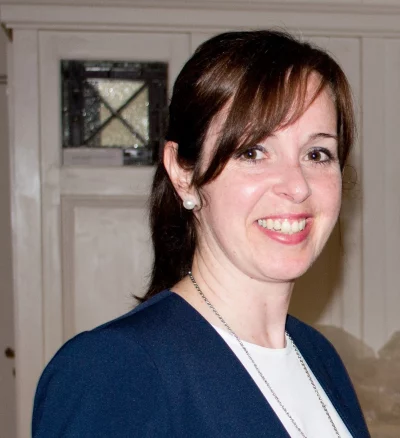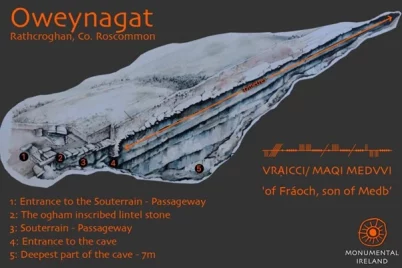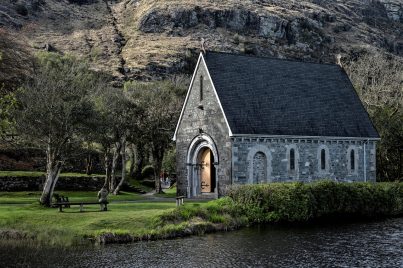Did You Know /Did Ye Know?
St. Brigid of Ireland – Legend, Myth, Customs & Folklore
Lá Fhéile Bríde
How many Patron Saints does Ireland have? We usually assume that there is only one! Saint Patrick is the Patron Saint of Ireland, of the country but what about the other saints and their patronage of places, people and animals. Saint Brigid is instantly recognisable as one of the female saints associated with Ireland and in a way, she is almost the counterbalance to Saint Patrick. Both Patrick and Brigid’s history seem to blend together, as somewhat contemporaries of each other, providing two pillars of Ireland’s early Christian tradition. Similarities exist between both. Both came from a druidic -pagan background, and both became Christian. Both have feast days during Springtime. Are they the yin and yang, the male and female of our saintly realm?
Pagan Deity / Christian Saint
In Brigid’s case she is the divine feminine deity and saint, shrouded in a little controversy by the fact there are references to an early pagan deity – Brigid, much the same as the Christian version. Like so much lore and legend of that time, could they be one and the same person and both traditions have claimed Brigid as their own – in a manner similar to Christmas which became associated with the pagan festival of light and how Christianity assimilated the pagan calendar into the Christian calendar.
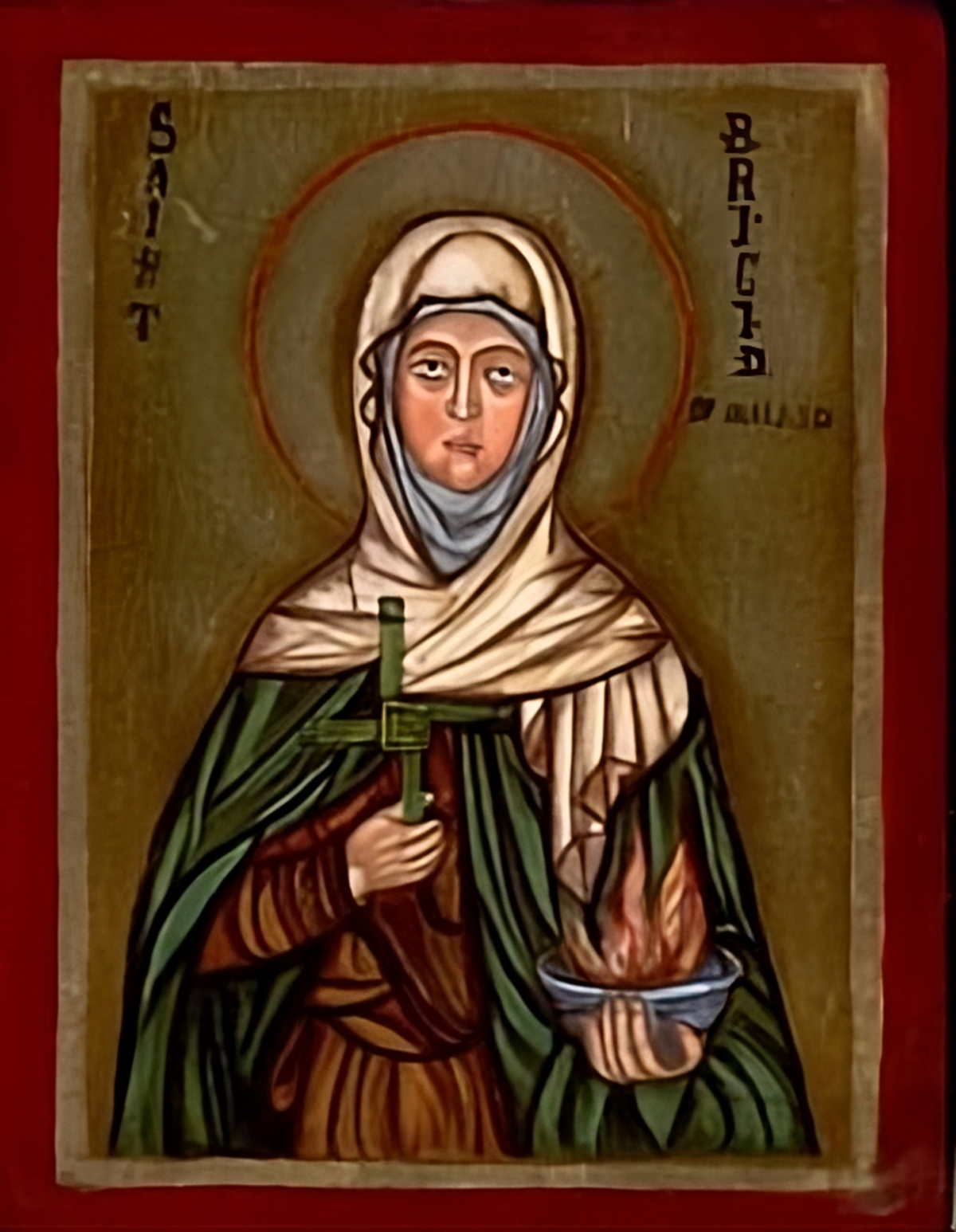
Brigid’s Feast Day is the First of February, denoting the start of Spring in our traditional calendar. However, in pre-Christian times the natural order of life and nature followed a “natural” calendar and order of events. In this regard the commencement of Spring was known as Imbolg/ Imbolc. Bolg in Gaeilge means stomach and Imbolg is suggestive of the time of the year “pregnant” with new life – meaning springtime. Saint Brigid has come to be affiliated with lambs, cows, dairymaids, midwives, nuns and newborn babies.
The Facts Who was Brigid?
Saint Brigid (b.451 – d.525) was born Brigid and shares a name with a Celtic goddess from whom many legends and folk customs are associated. According to Catholic Online, there is much debate over her parentage. The following is an extract
from their site.
It is widely believed her mother was Brocca, a Christian baptised by Saint Patrick, and her father was Dubthach, a Leinster chieftain. Brocca was a slave, therefore Brigid was born into slavery. When Dubthach’s wife discovered Brocca was pregnant, she was sold to a Druid landowner…legend states Brigid vomited any food the druid attempted to feed her, as he was impure, so a white cow with red ears sustained her instead. Many stories of Brigid’s purity followed her childhood. She was unable to keep from feeding the poor and healing them. One story says Brigid once gave her mother’s entire store of butter, that was later replenished after Brigid prayed. When she was about ten years old, Brigid was returned to her father’s home, as he was her legal master. Her charity did not end when she left her mother, and she donated his possessions to anyone who asked. Eventually, Dubthach became tired of her charitably nature and took her to the king of Leinster, with the intention of selling her. As he spoke to the king, Brigid gave his jewelled sword to a beggar so he could barter it for food for his family. When the king, who was a Christian, saw this, he recognized her heart and convinced Dubthach to grant her freedom by saying, “Her merit before God is greater than ours”.
With her freedom, the legend of Brigid continued. She founded monasteries for women and also one for men in Kildare. Many Irish monastic stories exist claiming that Brigid rested or resided there at some stage. Growing up I heard stories of Brigid travelling around Ireland and resting at various locations in West Cork. Brigid asked a hermit called Conleth to help her. Her religious biographer years later wrote how Conleth helped her found a school for art, metalwork. At this school is believed the Book of Kildare was illuminated.
How did Brigid acquire Land? The legend of her Voluminous Cloak.
Brigid approached the King of Leinster for land on which to build her monastery. He asked her what size parcel of land she required. She replied as much as her cloak would cover. Realising this would be a small area he agreed. However, she instructed her four friends to each take a corner of her cloak and head in the four directions, north, south, east and west and so the cloak grew and grew. With the amazement of this, it is reputed that the King of Leinster converted to Christianity.
Discussions around St. Brigid often link herself and Saint Patrick as being contemporaries, however if the dates (which we cannot be sure of) relating to Patrick and Brigid are correct, then Brigid (b.451 – d.525) would have been around 10 years old when Patrick (b.387- d.461) died. Old manuscripts make reference to Patrick having meetings with Brigid and some suggest she professed her vows to him. If dates were accurate then she would have professed in her early years (this would not have been unusual as there are references to 8 years olds becoming Abbots in history). Like Patrick and his use of the Shamrock as an icon and tool to instruct on the Holy Trinity, so too did St Brigid’s Cross become a symbol of Christianity. This cross over time has had many rituals and lore attached to it.
Rituals & Healing – Recollections
The National Folklore Collection has a digitised online platform which holds the collected personal reflections from all age groups of almost a hundred years ago. It is a wonderful resource for searching old folklore by topic. In relation to St. Brigid a few stood out. Michael, 84 years from County Galway (born during the Great Famine) gave the following recollection on traditions in 1937:
Long ago a great feast – such as it was- was held on oidhche feile Brighide. First was the usual carrying of the rushes which were to be used in the making of the famous St Brigid’s Cross. The youngest boy or girl of the family knelt at the door outside and holding the fresh green rushes in their hand knocked at the door three times and cried in Irish, “Síos ar do glúinibh agus leig Brighid isteach”. The members inside answered, “Tá fáilte roimh” Brigid. The rushes are then carried in and laid on the kitchen table. Each one then lends a hand in the making of the cross. The cross I saw was about six inches long. It was made with timber. (light lats) The rushes were woven on the wooden cross and it was left aside to be blessed on All Saints Day. After All Saints Day the cross is put carefully away in the loft and is supposed to keep away any misfortunes which might come on the family of this house.
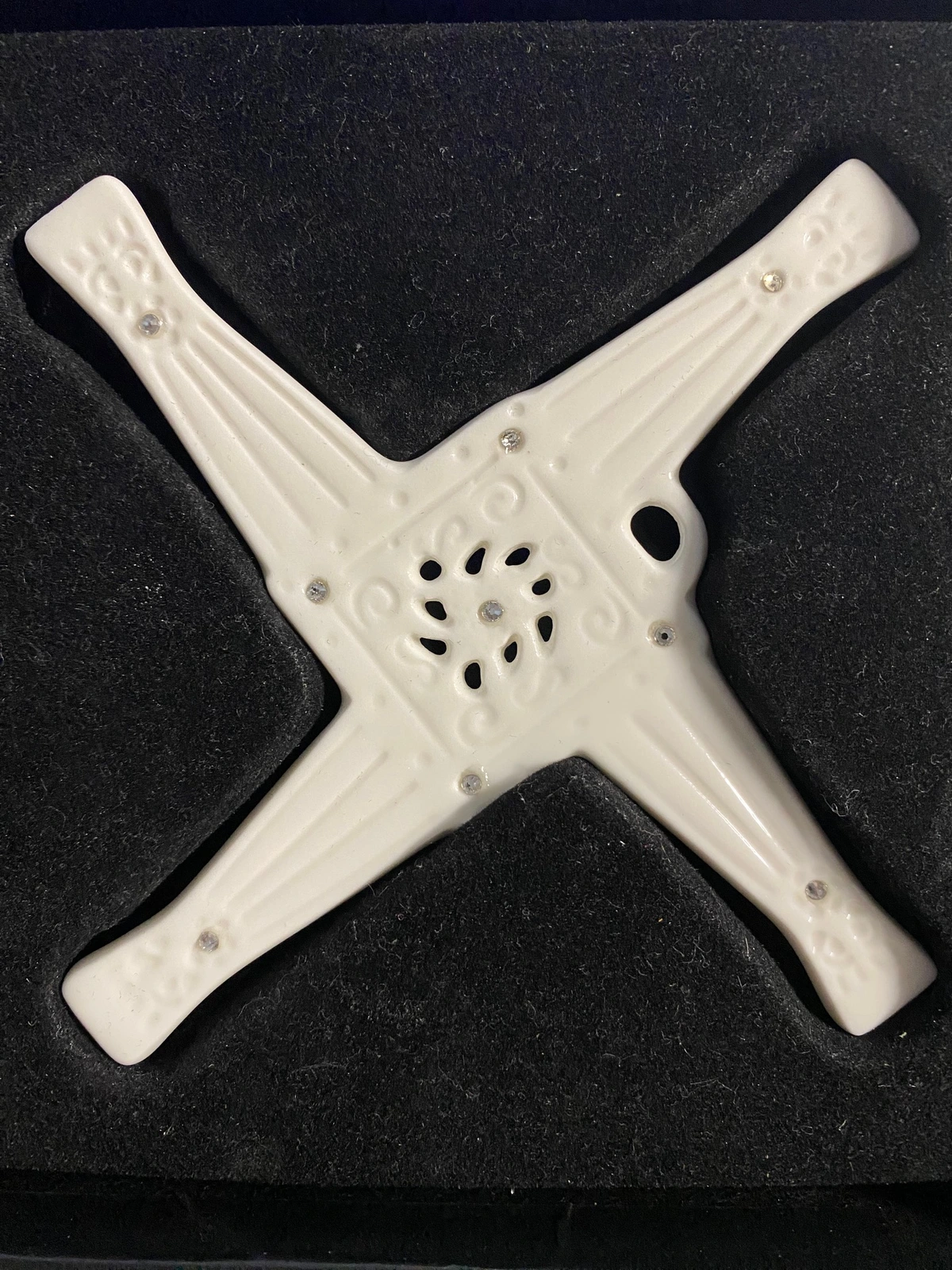
Another recollection like many other customs in Ireland referred to the hearth and the ashes in the fireplaces as an omen of things to come ………
On Saint Bridget’s night, a cross called “St. Brigid’;s Cross” is made. Two pieces of sticks was placed across one another in the shape of a cross. Then pieces of straw are wound around it. It is placed behind the rafter till the next year. Some people, when putting up a new cross, take down the old one but more often they are all left there. Long ago, in places, a small sheaf of rushes was made. When the people of the house would be going to bed, the sheaf of rushes was left in the ashes and whatever figure or letter was made in the ashes by the sheaf, the people of the house would go by that sign for the year.
As with many Irish festivals the Oíche / Eve or night before is imbued with ritual, tradition, piseóg and lore. St. Brigid’s Eve and events before dawn on the Saint’s Day re highlighted. Imagine my surprise when I found a recollection of a girl from a school just outside my native Dunmanway-
On St Brigid’s Eve the old people used put out a white cloth to cover Saint Brigid. Con Burke Milane Dunmanway says his mother used always ask “Did ye put out any cloth for poor Biddy to-night?” Then this cloth was brought in again on Saint Brigid’s day & they used rub it to a sick person to cure them.
Meanwhile Martin from Galway remembered a story he heard and since Brigid and Patrick were contemporaries of each other, people chose to attribute local places and icons to one or the other. In this case locals chose to select Brigid as the Saint
associated with the footprint and with springtime and lambs! What wonderful memories and traditions are yet undiscovered in this Folklore Collection. Not far from Clifden there is a rock in which there is the track of a saint’s foot. There is also the track of a lamb’s hoof and all the people who pass that way never pass it without putting something into it no matter what it was even if it was only a button or a bit of wire or anything would do. It is now almost packed with buttons and pieces of wire.
Some people say that it is St. Patrick’s footmark and more say that it is St. Brigid’s footmark with a lamb beside her and nobody knows but I think myself that it is St. Brigid’s footmark because St. Brigid was very fond of lambs and cows.
The Brídeóg Party, Biddy Boys, Household Stocktaking & Marriage Predictions
Like St. Stephen’s Day tradition of Singing the Wren, on February 1st in certain parts of Ireland, groups of Biddy Boys went house to house, with an effigy of St. Brigid (dressed in white) and made from a sheaf of straw or rushes, singing and collecting money or food for a party. This party was known as the Brídeóg Party.
February 1st became a traditional day for the housewives of Ireland to stocktake and check on their larder stores and supplies. It was a day off back then when spinning wheels and sewing machines halted, in fact bicycling was forbidden also. The turning of wheels was forbidden on this date. As with all Irish traditions there was an element of prophecy. If the first lamb of the season was a black lamb then it was an ominous sign of mourning that year for the family. Also according to Marion McGarry in Irish Customs and Rituals the left-over rushes were often woven into types of ladders representing men and into spinning wheels representing women and places under. singletons’ pillows in the hope of seeing their future partner in a dream that night.
Where is Saint Brigid’s Final Resting Place? Ireland & Portugal!
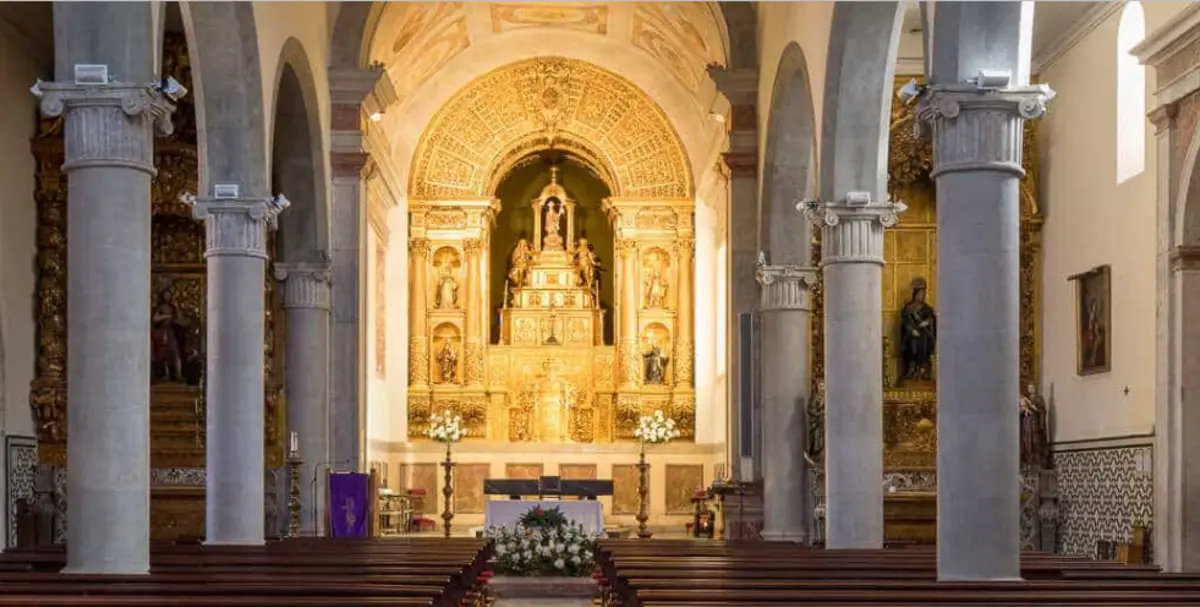
Once familiar with the story of Brigid, the next question surely is, where can she be venerated and where is her final resting place? The answer to this question is very continental in fact! On February 1st, 525 A.D. Brigid passed away, she was initially buried in a tomb at the altar of Kildare Cathedral. The tomb was supposed to be encrusted with gemstones. However, in 878 with the Viking raids, her relics were moved to the tomb of St. Patrick and Columba. In 1185, her remains were moved to Down Cathedral.
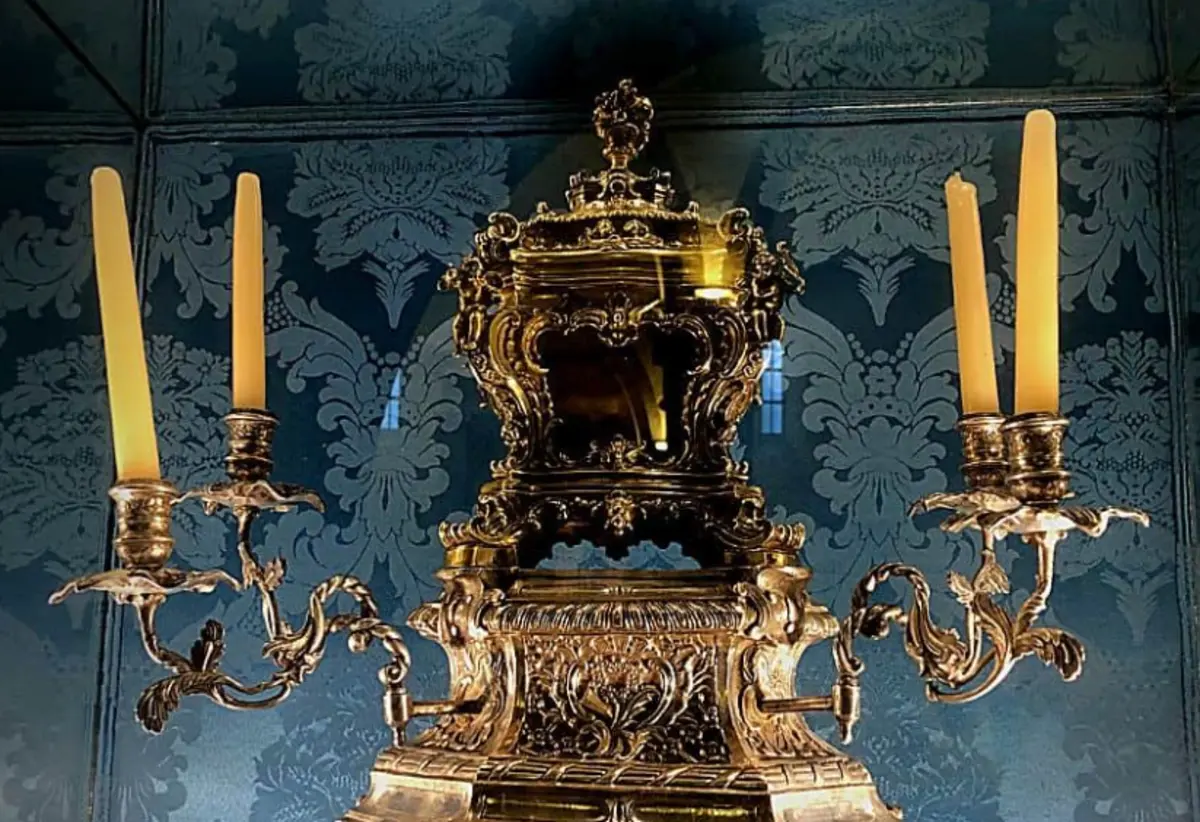
However, in 1283 her skull was moved to the Church of St. John the Baptist in Lumiar, Portugal. The tombs bear the following inscription “here in these three tombs lie the three Irish Knights who brought the head of St. Brigid, Virgin, a native of Ireland, whose relic is preserved in this chapel”. Later a portion of the skull was relocated to St. Brigid’s church – Killester. This was in the late 1920s and online there are old Pathé News reels of this return on YouTube. In recent years the Department of Foreign Affairs’ Irish delegation held an Ireland and Portugal event to honour the ties between the two countries, this is also available to view online.
What are our traditions in 2024?
Children still gather rushes all over Ireland for a day of craft making and storytelling in our National Schools. With the new Bank Holiday celebrating the life of Brigid perhaps the legacy of Brigid may garner more attention. A modern interpretation I came across recently was an advert circulating in New York among the Irish American Community who are organising an event called – St. Brigid’s Tea. A gathering of the Irish Community to meet and have an afternoon of tea and chat. Meanwhile in Westbury, NY, the legacy of the Irish Diaspora is clearly evident in the names of churches and cafes. St. Brigid’s Church has a neighbouring St. Brigid’s Deli and Café also. Here’s hoping the legend and rituals of our unique culture continue to live on with our emigrants and also at home.
Wishing you all a wonderful Bank Holiday and Lá Fhéile Bríde Shona Daoibh.
Additional Information
- Catholic Online, Lives of the Saints
- Marion McGarry, Irish Customs & Rituals, Orpen Press, 2020
- RTE, 5 things you didn’t know about St Brigid’s Day | RTÉ Brainstorm
- Britannica, Saint-Brigit-of-Ireland
- Irish Independent – St. Brigid’s skull in church just outside Lisbon
- YouTube St. Brigid’s Skull, Lumiar, Lisbon, Portugal
- St Brigid’s Day, Ireland and Portugal: A Musical Celebration, Government of Ireland, celebration in music, Irish Foreign Ministry, 2022
- Dúchas- Folklore Collection “The Schools’ Collection, ” by Dúchas © National Folklore Collection, UCD is licensed under CC BY-NC 4.0.
- Brigidine Sisters, Legend of St. Brigid’s Cloak
